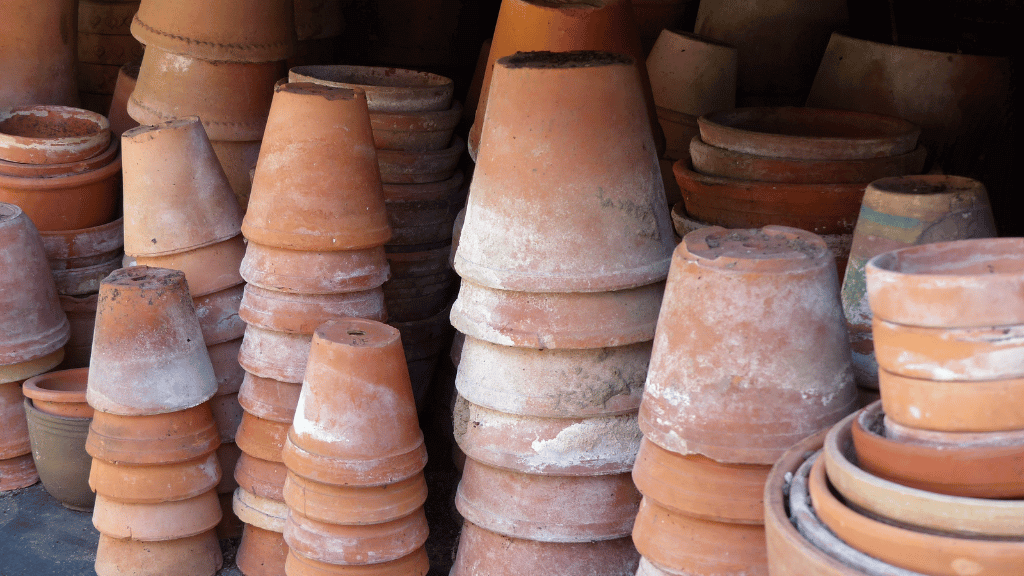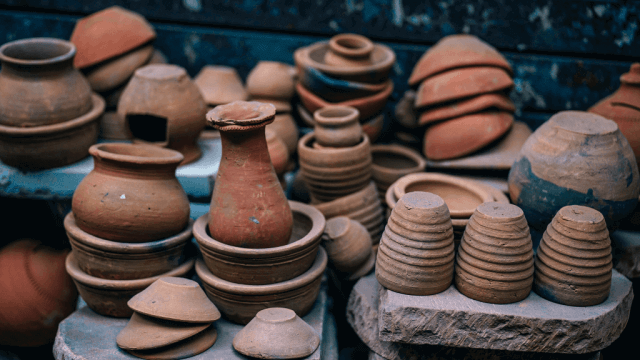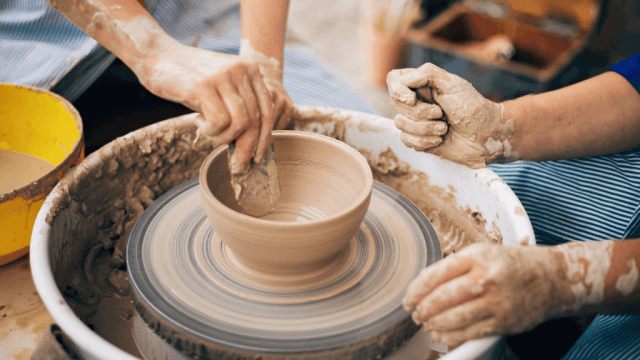Pottery is popular due to its creative expression, therapeutic benefits, versatility, practicality, and cultural significance.
People enjoy creating unique art, exploring various techniques, and participating in a craft with ancient ties.
The Art of Creative Expression
Pottery entices people with its unlimited possibilities for artistic expression.
Aspiring artists and hobbyists alike can craft unique pieces by blending colors, textures, and shapes.
The physical manipulation of clay also allows for a sensory experience that brings out inner creativity and imagination.
Therapeutic Benefits of Pottery
Many individuals turn to pottery as a form of therapy, as it is known to reduce stress and anxiety.
The act of molding clay necessitates focus and mindfulness, helping practitioners to unwind and feel more relaxed.
Additionally, seeing a project come to completion provides a sense of accomplishment and self-confidence.
Versatile Applications and Techniques
One reason pottery is so widely embraced is its versatility.
The craft offers a range of techniques like hand-building, wheel throwing, and slip casting, catering to different skill levels and interests.
With diverse firing methods and glaze applications, pottery can achieve various aesthetics and serve multiple purposes, from functional items to decorative pieces.
Hand-building
Hand-building is an accessible technique that allows individuals to shape clay without requiring specialized equipment.
Popular hand-building methods include coil, slab, and pinch techniques, all of which enable shaping into an assortment of functional and artistic forms.
Wheel Throwing
Wheel throwing involves using a pottery wheel to shape clay as it spins, enabling symmetrical and well-balanced designs.
This technique demands practice and skill, offering a more challenging but rewarding pottery experience.
Slip Casting
Slip casting is a method where liquid clay, or slip, is poured into a plaster mold to create uniform shapes.
This technique is particularly popular for producing mass quantities or intricate designs that would be challenging to create manually.
Practicality and Sustainability
Pottery also appeals to those seeking practical, functional items for daily use.
Ceramic wares, when properly made, are durable and can last a lifetime.
Additionally, pottery is an eco-friendly alternative to plastic and disposable products due to its reusable, biodegradable nature.
Cultural Significance and Tradition
Lastly, pottery is popular because it has deep roots in history and tradition.
It marks the progress of civilizations across various cultures and serves as a tangible reflection of a society’s beliefs, practices, and artistic trends.
Many people appreciate the opportunity to practice an art form with such rich heritage and to connect with their past.
Community and Social Aspects
Pottery fosters a sense of community by providing an environment where people can come together to share their passion, learn from one another, and bond over a shared craft.
Workshops and classes create opportunities for networking and friendship, inviting collaboration and support.
The social aspects of pottery contribute to its widespread appeal and accessibility.
Exploring Culture Through Pottery
Aspiring potters can explore different cultures through the study of pottery techniques and styles from around the world.
Whether it’s the renowned Japanese Raku, Greek Black-Figure Pottery, or African ceramics, practitioners can deepen their understanding of traditions and histories while experimenting with various techniques.
This diversity of cultural influences keeps the art of pottery interesting and perpetually evolving.
Economic Potential
While pottery might be a hobby for some, others view it as an opportunity to establish a source of income.
Marketable skills developed in pottery, such as wheel throwing or specialized glazing techniques, can pave the way to establishing a home-based business, selling pottery online, or even teaching classes.
Additionally, customized and individually crafted pottery often holds a higher value to buyers seeking unique and meaningful items.
Meditative and Mindful Practice
The process of working with clay encourages potters to engage in a state of mindfulness and presence.
Such focused attention allows individuals to maintain a clear and tranquil mind as they work with their hands.
The rhythmic motion of the wheel or the repetitive task of hand-building promotes a meditative state that enhances mental wellbeing and satisfaction.
Personal Growth and Development
Embarking on a pottery journey can lead to personal growth and development, as it involves overcoming challenges, learning new skills, and embracing failures.
Potters may experience several setbacks, such as misshapen creations or glazes not turning out as expected.
However, learning to adapt and problem-solve fosters resilience and personal growth, further enhancing the appeal of pottery as a creative and rewarding endeavor.
FAQ: Pottery’s Popularity Explained
Here are some frequently asked questions that further explain the popularity and appeal of pottery.
We provide concise and direct answers to help you gain a deeper understanding of this creative and rewarding art form.
How can pottery improve my mental wellbeing?
Pottery is known to reduce stress and anxiety by promoting focus, mindfulness, and a sense of accomplishment as you create unique and beautiful objects.
The meditative nature of pottery can also help improve your mental wellbeing.
Can pottery be an eco-friendly alternative to other materials?
Yes, pottery is an eco-friendly alternative to plastic and disposable products due to its reusable and biodegradable nature.
Ceramic wares, when properly made, are durable and can last a lifetime, unlike many single-use or short-lived items.
What are some of the diverse pottery techniques I can explore?
Some popular pottery techniques include hand-building, wheel throwing, and slip casting, catering to various skill levels and interests.
Hand-building methods involve coil, slab and pinch techniques, while wheel throwing focuses on shaping clay using a spinning pottery wheel, and slip casting involves pouring liquid clay into a mold.
Can I use pottery as a means to make an income?
Yes, many people turn their pottery skills into a source of income by establishing home-based businesses, selling their creations online, or teaching pottery classes.
Customized and individually crafted pottery often holds higher value for buyers seeking unique and meaningful items.
How does pottery connect me with different cultures and traditions?
Pottery allows you to explore different cultures through the study of techniques and styles from around the world, such as Japanese Raku, Greek Black-Figure Pottery, and African ceramics.
Practicing these techniques helps you deepen your understanding of global traditions and histories while broadening your artistic horizons.











